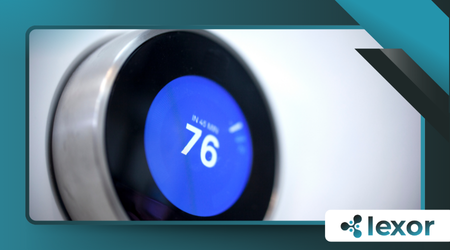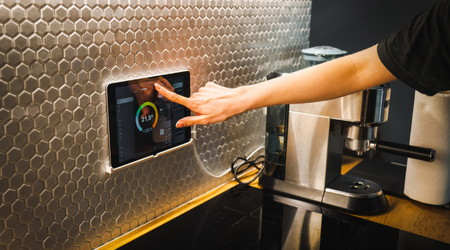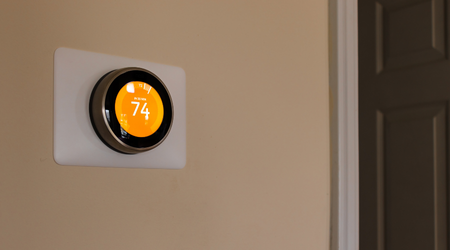How Smart Thermostats Help You Save

Smart thermostats have emerged as a cornerstone of modern energy efficiency, reshaping how households manage heating and cooling.
These intelligent devices go beyond basic temperature control, leveraging advanced algorithms, real-time data, and seamless connectivity to minimize energy waste.
As electricity prices continue to climb—rising 8.4% in the U.S. in 2024 alone—homeowners are increasingly turning to smart thermostats as a reliable solution for cutting costs without sacrificing comfort.
What sets these devices apart is their ability to learn and adapt.
Unlike traditional thermostats, which rely on manual adjustments, smart models analyze behavioral patterns, weather forecasts, and even occupancy to optimize performance.
For example, the Nest Learning Thermostat can recognize when residents are typically home and adjust temperatures accordingly, avoiding unnecessary HVAC usage.
A 2024 report by the American Council for an Energy-Efficient Economy (ACEEE) revealed that households using smart thermostats reduced heating costs by 10-12% and cooling expenses by 15% annually.
Beyond financial benefits, these devices contribute to broader sustainability efforts by lowering carbon emissions—a critical factor as governments push for stricter energy regulations.
The evolution of smart home ecosystems has further enhanced their functionality. Integration with solar panels, home batteries, and demand-response programs allows for even greater efficiency.
Some utility companies now offer incentives, such as rebates or reduced rates, for customers who allow slight temperature adjustments during peak demand periods.
Read more: How VR Is Transforming Employee Training Programs
With advancements in AI and IoT, smart thermostats are no longer just a convenience—they’re a necessity for energy-conscious consumers.
As we move toward smarter, more sustainable living, understanding their full potential is key to maximizing savings and environmental impact.
The Science Behind Smart Thermostats and Energy Efficiency
At the core of every smart thermostat is a sophisticated network of sensors and machine-learning algorithms.
These components work together to detect occupancy, monitor external weather conditions, and even predict energy demand fluctuations.
For instance, the Ecobee SmartThermostat uses room sensors to detect motion, ensuring that only occupied spaces are heated or cooled efficiently.
Geofencing technology takes automation a step further. By syncing with smartphones, smart thermostats can detect when residents are approaching home and adjust temperatures accordingly.
This eliminates the need to keep HVAC systems running unnecessarily, a common issue with traditional thermostats.
A study by Energy Star found that homes using geofencing features saved an additional 5-8% on energy bills compared to those relying solely on scheduling.
Machine learning refines temperature patterns over time, adapting to lifestyle changes.
+ Tech Comparison: Android vs iOS Devices in 2025
If a family starts waking up earlier, the thermostat will gradually shift its pre-heating or cooling cycles to match the new routine. This dynamic adjustment ensures optimal comfort while minimizing energy waste.
Another critical feature is peak demand management.
Some smart thermostats, like those from Emerson Sensi, can automatically reduce HVAC usage during high-energy periods, easing strain on the grid.
This not only lowers bills but also helps prevent blackouts during extreme weather events.
Integration with renewable energy sources further enhances efficiency.

Homes with solar panels can program smart thermostats to maximize HVAC usage during peak solar production, reducing reliance on grid electricity.
Battery storage systems can store excess energy for later use, creating a self-sustaining cycle.
The future of smart thermostats lies in predictive analytics.
Emerging models are beginning to incorporate hyper-local weather forecasts, allowing them to preemptively adjust settings before temperature shifts occur.
This proactive approach could push energy savings even higher in the coming years.
Financial and Environmental Benefits of Smart Thermostats
The financial advantages of smart thermostats are undeniable. According to the U.S. Department of Energy, proper thermostat use can reduce HVAC costs by up to $180 per year.
However, smart models often exceed these savings due to their automation and learning capabilities.
For example, a household in Texas reported a 20% reduction in cooling costs after switching to a Google Nest Thermostat, thanks to its adaptive scheduling and remote control features.
Beyond individual savings, utility companies are increasingly offering demand-response incentives.
Programs like OhmConnect reward users for allowing slight temperature adjustments during peak hours, sometimes paying up to $150 annually for participation.
This not only benefits homeowners but also stabilizes the broader energy grid.
+ How to Use Tablets in Preschool Learning
From an environmental perspective, smart thermostats play a crucial role in reducing carbon footprints.
The International Energy Agency (IEA) estimates that residential heating and cooling account for nearly 40% of global energy-related CO₂ emissions.
By optimizing HVAC efficiency, smart thermostats help curb this impact.
Some models, like the Honeywell Home T9, even provide energy usage reports, allowing users to track consumption trends and identify further savings opportunities.
This transparency encourages more mindful energy use, fostering long-term sustainability habits.

The shift toward renewable energy integration also amplifies environmental benefits.
Smart thermostats can prioritize HVAC operation during periods of high solar or wind energy availability, reducing reliance on fossil fuel-powered grids.
In regions with time-of-use electricity pricing, this can lead to even greater cost reductions.
As governments implement stricter energy regulations—such as California’s Title 24, which mandates smart thermostats in new constructions—their adoption will become more widespread.
This regulatory push underscores their importance in achieving global climate goals.
Smart Thermostats vs. Conventional Models: A Clear Advantage
Traditional thermostats require constant manual adjustments, often leading to inefficiencies. Users frequently set temperatures too high in winter or too low in summer, wasting energy.
Even programmable models fall short, as they lack the adaptability to account for unexpected schedule changes.
Smart thermostats eliminate these shortcomings through automation.
Devices like the Ecobee SmartThermostat Premium use AI-driven occupancy detection to ensure rooms are only conditioned when needed. If a family leaves for an unplanned trip, the system will switch to an energy-saving mode automatically.
Remote control via smartphone apps adds another layer of convenience. Forgot to adjust the thermostat before leaving?
A quick tap on the Amazon Alexa or Google Home app can fix that. Voice assistants also enable hands-free adjustments, making temperature control more accessible for all users.
Integration with broader smart home ecosystems enhances functionality.
For example, pairing a smart thermostat with window sensors ensures that HVAC systems pause when windows are open, preventing energy waste.
Similarly, linking with smart vents allows for zone-based heating and cooling, directing airflow only where necessary.
The ability to connect with solar inverters and battery storage systems further sets smart thermostats apart.
Homes with renewable energy setups can program thermostats to maximize self-consumption, reducing grid dependence.
Some advanced models even factor in real-time electricity prices, adjusting usage to capitalize on lower rates.
As technology evolves, the gap between smart and conventional thermostats will only widen.
Future iterations may incorporate biometric sensors to personalize comfort based on individual body temperatures, pushing efficiency to new heights.
The Future of Smart Thermostats and Energy Management
The next generation of smart thermostats will be defined by predictive intelligence.
Instead of merely reacting to user behavior, these devices will anticipate needs based on historical data and hyper-local weather forecasts.
For instance, if a cold front is expected overnight, the thermostat might pre-warm the house slightly to reduce morning heating demands.
Interconnectivity with smart grids will revolutionize energy management.
Utilities could communicate directly with thermostats, adjusting settings during high-demand periods to prevent overloads.
In return, participants might receive discounted rates or cash incentives, making energy savings even more lucrative.
Another emerging trend is blockchain-enabled energy trading.
Homes with excess solar power could sell it back to the grid, with smart thermostats autonomously optimizing when to store, use, or sell energy for maximum profit.
Pilot programs in Germany and Australia are already testing this concept.
Regulatory changes will also shape adoption.
The European Union’s Energy Efficiency Directive is pushing for smart thermostat mandates in all new buildings by 2027, mirroring California’s Title 24.
Such policies will accelerate market penetration, making these devices a standard feature in modern homes.
Advancements in battery technology will further enhance efficiency. Longer-lasting home batteries mean smart thermostats can rely more on stored renewable energy, reducing grid dependence during peak hours.
Companies like Tesla and LG Chem are already developing next-gen solutions.
Ultimately, smart thermostats will evolve into central energy hubs, coordinating not just HVAC but also lighting, appliances, and EV charging.
This holistic approach will redefine home energy management, delivering unprecedented savings and sustainability.
Conclusion
Smart thermostats have transitioned from luxury gadgets to essential tools for energy efficiency.
Their ability to learn, adapt, and integrate with renewable energy systems makes them indispensable in today’s cost-conscious and eco-aware world.
The financial benefits are compelling, with studies showing 10-15% reductions in heating and cooling costs.
When combined with utility incentives and solar integration, the savings can be even greater. Environmentally, these devices help reduce carbon emissions, aligning with global sustainability targets.
As technology advances, smart thermostats will become even more intuitive, predictive, and interconnected.
From AI-driven adjustments to blockchain energy trading, the future holds exciting possibilities.
For homeowners looking to cut costs and reduce environmental impact, investing in a smart thermostat is no longer optional—it’s a smart, forward-thinking decision.
Frequently Asked Questions
How much can I really save with a smart thermostat?
Studies show average savings of 10-15% on heating and cooling bills, with some households reporting even higher reductions due to automation and demand-response programs.
Do smart thermostats work without Wi-Fi?
Most retain basic scheduling functions offline but lose remote control, learning features, and real-time updates until connectivity is restored.
Are smart thermostats compatible with all HVAC systems?
Most support common systems (central air, heat pumps), but older or complex setups may require professional installation checks.
Can renters install smart thermostats?
Many models are renter-friendly, with removable mounts. However, always check lease agreements or consult landlords first.
Do smart thermostats really help the environment?
Yes. By optimizing energy use, they reduce fossil fuel dependence, lowering household carbon footprints significantly.
What’s the best smart thermostat for solar-powered homes?
Models like Ecobee and Nest offer solar integration, prioritizing HVAC usage during peak production times for maximum efficiency.
How long does it take for a smart thermostat to “learn” my habits?
Most devices adapt within 1-2 weeks, though full optimization may take a month or more, depending on routine consistency.
Are there privacy concerns with smart thermostats?
Reputable brands use encryption and allow data control. Always review privacy policies and disable unnecessary data-sharing features.
Can I use a smart thermostat with radiant floor heating?
Yes, but ensure compatibility with low-voltage systems. Some models, like Honeywell Lyric, support radiant heating setups.
Will a smart thermostat void my HVAC warranty?
Generally no, but improper installation might. Always hire a certified technician if unsure about wiring compatibility.
This comprehensive guide ensures you have all the information needed to make an informed decision about smart thermostats, their benefits, and their role in the future of energy efficiency.
